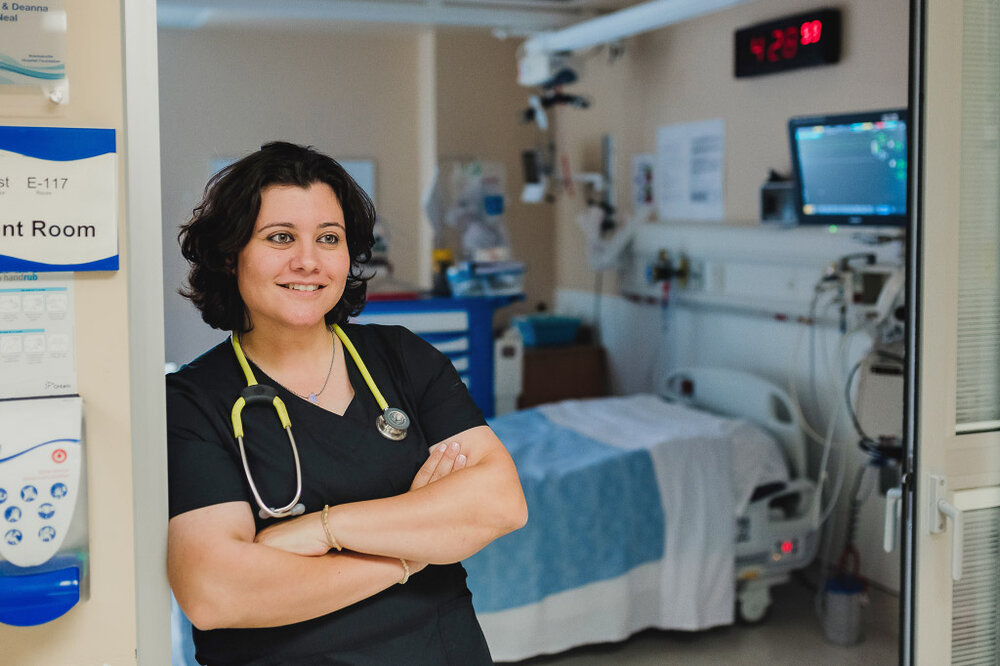The Longitudinal Family Physician (LFP) Payment Model, introduced in 2023, is already showing incredible results. Since its launch, over 4,300 family physicians have enrolled in the LFP Payment Model.
It was developed by the BC Ministry of Health in consultation with BC Family Doctors and Doctors of BC in response to an urgent need to retain and attract family physicians. In just two years, the LFP Payment Model has connected nearly 250,000 patients with a family doctor, over 1,000 new longitudinal doctors have been added to the province and more medical students are choosing family medicine.
Is the LFP Payment Model Right for Your Family Practice?
The LFP Payment Model offers a compensation option that values the time, expertise and comprehensive care family physicians provide to their patients. It was developed to:
- Recognize the complexity of longitudinal care
- Value the time physicians spend with patients
- Acknowledge the value of clinical administrative services and indirect care
- Support flexibility in family practice and promote family physician well-being
- Enable team-based care delivery for clinics who choose
- Recognize the professional agency and clinical judgement of family physicians
- Offer a payment option that is simple to access and administer
Key Components of the LFP Payment Model
A significant departure from the fee-for-service model, the Longitudinal Family Physician Payment Model is a blended model that combines three core components:
The LFP model also simplifies medical billing significantly by using only a handful of fee codes.
LFP Payment Model Eligibility Requirements
This payment model is a compensation option for family physicians who provide longitudinal, relationship-based care to a known panel of patients. To qualify for the LFP Payment Model, family physicians must:
- Have a minimum of 250 Empanelled Patients within four months of enrolling in the LFP Payment Model
- Provide longitudinal family medicine care (in-person and virtual)
- Provide the “Required Services” outlined in the LFP Payment Schedule (page 10)
- Provide LFP Clinic-based Services for a minimum of one day per week, distributed equitably over the course of a year
- Ensure that Clinic Non-panel Services are no more than 30% of LFP Clinic-based Services
- Contribute either directly or indirectly to the rent, lease or ownership costs, as well as other operating costs (such as staffing, equipment and supplies) of the clinic(s) that will be their LFP Clinic
Locum Eligibility
The LFP Payment Model is also a compensation option for locums who provide care on behalf of longitudinal family physicians. An “LFP Locum” is a physician who meets the Locum Eligibility Criteria found in the LFP Payment Schedule (pages 27-29) and provides LFP Locum Services on behalf of a Host Physician.
How the LFP Model Compensates Physicians
Once you have determined you are eligible, it’s important to weigh the benefits of the LFP model against your current payment model to see if it’s a good fit. BC Family Doctors has posted a compensation calculator for members to help make the comparison easier.
For example, a full-time family physician working 1,680 hours a year, who sees 1,250 patients with cases of average complexity and has 5,000 visits from patients a year, will earn a minimum of $385,000, compared to $250,000 under the fee-for-service model.
Billing for Time
Physician time spent on direct patient care, indirect patient care as well as clinical administration time will all be compensated at a rate of $32.50 per 15 minutes. For billing, there are four time codes in the LFP model:
| Permanent Physician LFP Code | Locum Physician LFP Code | Definition | Description |
| 98010 | 98040 | Direct Patient Care | Time spent with patients providing services in-office, virtually or during home visits |
| 98011 | 98041 | Indirect Patient Care | Charting, lab reviews, refills, care planning, referrals, asynchronous virtual care, travel time for home visits, clinical teaching when patient is not present, clinically required forms (including medical death certificates) and more |
| 98012 | 98042 | Clinical Administration (max 10% of your total time per year) | Developing and maintaining active patient panel, proactive panel management (e.g. scanning for preventative care, annual shots, etc.), Medical Director and Privacy Officer visit responsibilities |
| 98119 | 98219 | Travel Time | Payable for time spent on travel for the most direct route between patient care sites |
| For more information on billing time codes, read our LFP support article or consult the LFP Payment Schedule (pages 11-13). | |||
Regardless of actual patient diagnosis, time codes are always billed with diagnosis ICD-9 code: L23, which is specific to the LFP model. Further simplifying billing, you do NOT need to bill time codes for each individual patient, flip back and forth between direct and indirect patient care codes or bill a time code for every patient you see.
Example:
If you start your day seeing a patient for direct care at 9:00 a.m. and work through until 2:00 p.m. (providing both direct and indirect care for multiple patients without a break), the only time code that needs to be billed is 98010 for 5 hours (or 20 15-minute units).
Patients who are not a part of your panel or on the panels of your partners (but who are seen during the time you are seeing LFP panel patients) can also be included in the time blocks for LFP patients. Keep in mind these “non-panel” patients must not exceed 30% of the total LFP and non-panel services each year.
The maximum combined time units that may be billed per day is 56 (14 hours). The maximum time units that may be billed over a rolling 14-day period is 480 units (120 hours). Time you spend providing service outside of your LFP does not count towards this limit.
As with fee-for-service, you must submit time code claims to HIBC via Teleplan within 90 days of the date of service.
Billing for Interactions
Patient interactions are accounted for in a simple set of 8 codes billed in addition to time codes. These can be billed for any patient interaction connected to your LFP clinic, whether it’s in-clinic, virtual or in a patient’s home setting.
| Permanent Physician LFP Code | Locum Physician LFP Code | Definition | Value (on top of time codes) |
| 98031 | 98061 | In-person interaction at a clinic | $25 |
| 98032 | 98062 | Virtual interaction by phone or video | $25 |
| 98033 | 98063 | In-person interaction at patient’s home | $100 |
| 98030 | 98060 | Clinic-based consultation | $60 |
| 98034 | 98064 | In-person or video group interaction | $25/patient |
| 98022 | 98052 | In-person interaction with a minor procedure or diagnostic test | $10 (max 2 per patient per day) This code may be added on top of both time + another interaction code |
| 98021 | 98051 | In-person interaction with a standard procedure | $60 (max 1 per patient per day) |
| 98020 | 98050 | In-person interaction with an advanced procedure | $110 (max 1 per patient per day) |
| For a complete list of billing codes for Long-term Care and Palliative Facility Services, Inpatient Facility Services, and Pregnancy & Newborn Facility Services, see pages 35-52 of the LFP Payment Schedule. Fee-For-Service codes (such as those for tray fees and diagnostic tests) are not payable in addition to Patient Interaction Codes as these are taken into consideration in the overall LFP model. For more information on billing interaction codes including definitions for minor, standard and advanced procedures, read our LFP support article or consult the LFP Payment Schedule. | |||
Note that with the exception of adding 98022 when applicable, you will not bill more than one interaction code per visit. Simply choose the interaction code with the highest value that is applicable to your visit. There are no thresholds where interactions are paid at a lesser rate (e.g., 50%) as with some fee-for-service codes.
The maximum number of patient interaction codes payable in a single calendar day is 50 (not including code 98022/98052 for minor procedures). Any services you provide that are not tied to your LFP clinic do not count towards your limit of 50 interactions per day.
As with fee-for-service, you must submit interaction code claims to HIBC via Teleplan within 90 days of the date of service.
Panel Payments
When enrolling in the LFP Payment Model, you will be required to develop and submit an accurate list of active patients for whom you have accepted responsibility within three months of enrolling in the LFP Payment Model.
Based on this list (minimum 250 patients), family physicians enrolled in the LFP Payment Model will receive an annual “panel payment.” The payment will vary based on the number and complexity of active panel patients submitted.
Each year you will confirm or update your active panel to ensure that your panel payment accurately reflects any changes in your practice profile.
Need help? Many EMRs have created how-to guides to help you submit your list of empanelled patients.
Billing Outside of your LFP Payment Model
Note that care provided outside of the LFP model can still be claimed separately, and in addition, as per current practices (e.g., FFS). For example:
- Services provided in a facility (such as a hospital, LTC, rehab centre, etc.)
- Services provided under a contract or other payment model
- ICBC and WorkSafeBC claims (TIP: If you provide LFP Clinic-based Services and WorkSafeBC/ICBC-services on the same day, start and end times must be entered on the codes billed for WorkSafeBC/ICBC-related care.)
- Services to residents of other provinces/territories
- Medical Assistance in Dying
- Specialty insurance claims (such as Medavie Blue Cross, DND, RCMP, Refugees, Veterans Affairs)
- Third party and private billings for industrial exams, medico-legal forms, insurance forms, cosmetic work, etc.
How to Enrol in the LFP Payment Model
To enrol in the LFP model, you must first obtain a facility number for your LFP clinic via online application or printable form. Each clinic location must obtain a unique Facility Number. Only one Facility Number is required per clinic. If you already have a facility number, you can skip this step.
Once you have a facility number, you may enrol in the LFP Payment Model by submitting the zero-sum Registration Code 98000 to HIBC via Teleplan. Use the following “patient” demographic information:
PHN: 9694105066
Patient Surname: Portal
First name: LFP
Date of Birth: January 1, 2023
ICD-9 code: L23
It’s easy to set this up on Dr.Bill. Read our LFP support article for a quick recap.
Physicians are advised to submit Registration Code 98000 five business days prior to submitting claims under the LFP Payment Model. Alternatively, you can start entering claims immediately for the LFP model but hold them for 5 days before submitting to allow for processing time on MSP’s side.
Code 98000 can be submitted anytime during the year in your first year of enrollment in the FLP model. For subsequent years, you must submit code 98000 annually between Jan 1 and Mar 31 to stay enrolled.
Transition Code 98001
For physicians who do not do not yet meet the requirement that non-panel services are no more than 30% of the total of LFP Practice Services, transition code 98001 may be entered to confirm you are actively transitioning the practice to meet this requirement by September 30, 2025. If applicable, use the following "patient" demographics to submit this code:
PHN: 9753035697
Patient Surname: Portal
First name: LFP
Date of Birth: January 1, 2013
ICD-9 code: L23
The Transition Code must be submitted using the MSP Facility Number associated with the LFP Clinic. If you practice at multiple LFP Clinic locations, submit a separate Transition Code with the associated MSP Facility Number of each LFP Clinic location.
Locum Registration
To enrol as a locum, you must submit registration code 98000 as detailed above as well as locum registration code 98005 using your MSP Practitioner Number. Submit code 98005 using the following information:
PHN: 9753035697
Patient Surname: Portal
First name: LFP
Date of Birth: January 1, 2013
ICD-9 code: L23
Before enrolling in the LFP model, we recommend reading the LFP Payment Schedule thoroughly and utilizing the BC Family Doctors compensation calculator to compare this model against your current payment model. Though you can voluntarily withdraw from the LFP Payment Model and transition to another payment model at any time, any physician who withdraws may not re-enrol for a period of 12 months unless approved in writing by the Medical Services Commission.
Frequently Asked Questions
Which patients can I bill for using the LFP model?
You can bill for any patients on your panel or who are on the panel of another family physician at your LFP clinic. Maternity services for patients not on your panel are also billable.
To be billed under the LFP model, these services must be provided via longitudinal family physician clinics, pregnancy and newborn clinics, and patients’ home settings. It also includes facility-based care in long-term care facilities and palliative care facilities, as well as inpatient care and pregnancy and newborn care in hospital, and virtual care service associated with your LFP clinic. Note that when providing virtual services, you do not need to be physically in your LFP clinic.
You can also bill for patients not on your panel and not on the panels of your colleagues; however, non-panel services (e.g., non-panel walk-in patients) may not exceed 30% of your LFP practice.
What if the other physicians in my clinic do not enrol in the LFP Payment Model?
It is perfectly fine for you to be the only physician on the LFP model in your team/group/partner clinic. Patients you see for your colleagues will be included in this model (not considered non-panel patients) regardless of what model your colleagues use.
Can I bill for work done by other clinicians, nurses, allied health professionals or MOAs?
No. Currently the LFP model only pays for physician work and time. You cannot bill for the work or time of other professionals that you delegate to (though there has been discussion about how team-based care may be supported in the future). However, you may bill for your indirect time for talking to learners about a patient following the visit. You can also bill for your indirect time if the learner calls, texts or otherwise consults with you during a patient visit. The simple distinction is that you can bill for your work and time, but not another team member’s.
Why is there no counselling code?
Unlike fee-for-service, you decide what warrants counselling. If you choose to provide counselling, your time is covered under the time and interaction codes. There is no limit on the time that may be spent counselling patients or the number of counselling interactions per year.
How do I bill for time spent on-call?
If you are on-call and don’t receive any calls, you don’t bill for that time. However, if you start taking calls or seeing patients, you bill for that time. Your time spent working on-call accumulates. For example, if you take three 5-minute calls, that is one 15-minute time unit.
Where can I find more information?
If you are considering the LFP Payment Model, we highly recommend heading over to the Doctors of BC YouTube channel for a wealth of how-to videos and LFP billing tips.
Additionally, you can consult the following resources to learn more:
At Dr.Bill, we are set up for the LFP Payment Model and are here to answer your questions about LFP billing. Please contact us with your questions and we will respond within one business day.

Additional Reading
Dr. Nour Khatib left medical school for a finance career, but a persistent calling encouraged her to return years later and become an emergency physician.





